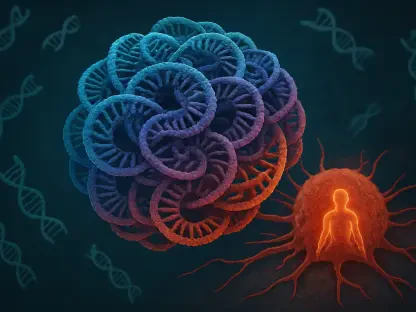A recent study involving ancient DNA analysis has fundamentally reshaped the understanding of early human history in South Africa. By examining DNA from nine prehistoric skeletons unearthed in the Oakhurst rock shelter, researchers have been able to reconstruct a more comprehensive picture of the genetic and cultural evolution of early humans in the region. These skeletons, dating back 9,000 years, provide crucial evidence revealing a continuous genetic lineage with minimal external interference until approximately 1,300 years ago. This discovery challenges previous beliefs attributing changes in stone tool technology to external migrations. Instead, it suggests that indigenous innovation and cultural evolution were the primary drivers.
Discoveries from the Oakhurst Rockshelter
Analyzing Ancient DNA
The rigorous analysis conducted by the team, led by Dr. Joscha Gretzinger from the Max Planck Institute for Evolutionary Anthropology, involved extracting DNA from various burial depths at the Oakhurst rockshelter. Researchers discovered a stable genetic signature that persisted throughout the Holocene epoch. This genetic continuity persisted uninterrupted until about 1,300 years ago. At that point, the arrival of East African herders and West African farmers marked the beginning of significant genetic blending, triggered primarily by the advent of pastoralism and farming. These findings provide valuable insights, indicating indigenous communities experienced genetic stability, developing their unique innovations independently before external influences arrived.
Through the application of advanced computational tools, researchers confirmed long-term genetic continuity among these early South African communities, arguing against the previously held assumptions that migration was a catalyst for novel technologies. Instead, the findings underscore indigenous innovation and adaptability. This work gives new credence to the idea that technological and cultural advancements were indigenous in nature, not necessarily introduced by outside groups. The implications of this discovery continue to influence the perception of how ancient communities evolved and adapted over millennia without relying on external influences.
Impact on Modern Populations
The current South African populations, including groups like the Khomani and Karretjiemense, still retain genetic links to these ancient communities that once thrived in South Africa. This connection further solidifies the notion that the ancient, Pleistocene-derived genetic signature persists in these communities. The study not only highlights the persistent clinging of ancient genetic traits in modern populations but also amplifies the importance of understanding the complex ancestry shaped by later periods of colonization and trade. This complexity reveals how modern genetic makeup reflects these intricate historical developments.
These revelations shed light on the enduring legacy and inherent resilience of hunter-gatherer societies in contributing knowledge about early human history. By exploring the nuanced ancestry of these groups, it becomes evident that a sophisticated understanding of past events can be achieved. The intricate tapestry of genetic and cultural continuity unveils a story not merely of survival but of thriving through adaptation and innovation. This aspect holds profound significance in tracing the lineage and understanding the development patterns present in today’s southern African populations.
Indigenous Innovation and Cultural Evolution
Redefining Historical Perspectives
The implications of this groundbreaking study extend beyond merely reshaping understanding of South African history; they invite renewed focus on the innovative capacity of indigenous populations throughout history. By refuting earlier hypotheses about external migration being a primary factor in cultural and technological development, the research places emphasis on the inherent ingenuity present within these ancient communities. This perspective underscores the potential for indigenous populations to independently foster significant technological advancements and cultural shifts over time.
These insights not only contribute to the historical narrative but also inspire a reevaluation of indigenous contributions globally. The strong evidence favoring internal developments stresses the need to appreciate the adaptive strategies honed through necessity and resilience. These strategies likely played a central role in shaping the historical trajectories of many regions worldwide, offering lessons for understanding similar developments elsewhere and providing context to modern discussions on cultural evolution.
Future Research Pathways
The outcomes of this study pave the way for further research examining how indigenous groups adapted their cultural practices and technologies without the direct influence of incoming populations. By focusing on regions worldwide with similar prehistoric records, researchers can expand understanding of how such isolated developments paralleled the broader human narrative. Future inquiries can delve deeper into the dynamics that enabled these communities to sustain cultural vitality independently, unravel aspects that could have been overlooked, and explore the interplay between genetics and cultural evolution in shaping civilization landscapes.
Through continued exploration of ancient DNA, researchers gain valuable analytical tools to trace historical human activities and cultural shifts. Investigating how genetic adaptations influence societal behavior provides fresh insights into the ways communities have negotiated their identities over extended periods. This study marks just the beginning of a journey that further refines our comprehension of prehistoric communities’ cultural resilience, emphasizing internal creativity as a positive force that played a defining role in human history.
A New Understanding of Human History
A groundbreaking study utilizing ancient DNA analysis has significantly altered our understanding of early human history in South Africa. Researchers examined DNA from nine prehistoric skeletal remains discovered at the Oakhurst rock shelter. These remains, which are about 9,000 years old, have enabled scientists to piece together a more detailed picture of genetic and cultural developments among early humans living in the area. The evidence from these skeletons points to an uninterrupted genetic lineage with very little outside influence until around 1,300 years ago. Previously, it was believed that changes in stone tool technology were largely due to external migrations. However, this discovery suggests that local innovation and internal cultural progress were actually the main forces behind technological advancements. These findings not only reshape our understanding of how early humans developed in South Africa but also highlight the significance of indigenous creativity and adaptation in shaping human history.









